Quick Answer
Your smoke detector is beeping most likely due to a low battery (single chirps every 30-60 seconds), detected smoke (three consecutive beeps), dust accumulation in the sensing chamber, end of its lifespan (7-10 years), or environmental factors like humidity. The solution depends on identifying the specific beep pattern.
Table of Contents
- Understanding Smoke Detector Beeps
- Decoding Different Types of Beeps
- Common Reasons for Beeping
- How to Stop the Beeping
- Night-time Beeping
- Different Types of Detectors
- Smart Smoke Detectors
- Importance of Working Detectors
- Maintenance Schedule
- Detector Placement Guide
- Technology Behind Detectors
- When to Call a Professional
- FAQ
- Recommended Products
- Real-Life Saves
- Conclusion
Understanding Those Mysterious Beeps from Your Smoke Detector
That persistent beeping from your smoke detector can be both annoying and concerning. If you’re wondering why your smoke detector keeps beeping, you’re not alone. This seemingly simple device communicates through a variety of sounds, each with its own important message about your home’s safety.
Smoke detectors are designed to alert you of potential dangers, but when they start chirping randomly, especially in the middle of the night, it can leave you frustrated and confused. Let’s dive into the most common reasons your smoke detector might be beeping and what each sound is trying to tell you.
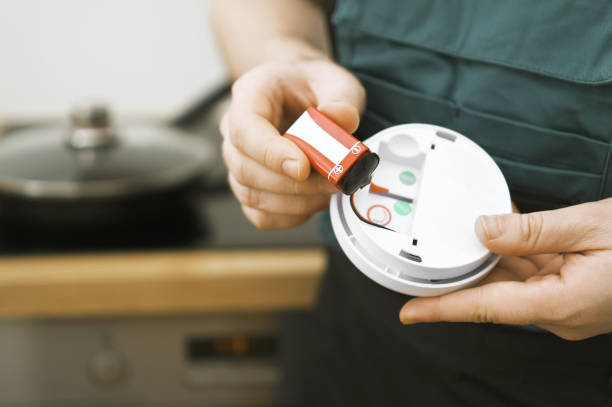
Decoding Different Types of Smoke Detector Beeps
Not all beeps are created equal. Your smoke detector uses distinct patterns to communicate different situations:
The Warning Alarm: Beep-Beep-Beep
When your smoke detector emits three loud, consistent beeps in a row, it’s detected smoke in your home. This is the most serious alert and requires immediate action. According to the National Fire Protection Association, this pattern indicates a potential fire emergency.
Don’t ignore this sound, even if you suspect it’s a false alarm. These three consecutive beeps mean:
- Smoke has been detected
- There could be a fire developing somewhere in your home
- You should evacuate immediately and call emergency services
Remember, even if you don’t see flames, smoke can be present from sources like smoldering electrical wires behind walls or in attics.
Low Battery Alert: Chirp…Chirp…Chirp
Perhaps the most common and frustrating sound is the intermittent chirp that occurs every 30-60 seconds. This distinct signal typically means your smoke detector’s battery is running low.
Modern smoke detectors are designed to alert you well before the battery fails completely. This gives you plenty of time to replace the battery before losing protection. If you’re hearing this chirp, it’s time to:
- Purchase a new 9-volt battery (or whatever type your model requires)
- Remove the detector cover
- Replace the old battery
- Test the detector to ensure the chirping stops
This simple maintenance task can save you from those middle-of-the-night wake-up calls. At SmokeDetectorBeeping.com, we recommend changing your smoke detector batteries at least once a year, regardless of whether they’re chirping.
End-of-Life Notification: Multiple Chirps
Did you know that smoke detectors don’t last forever? Most models have a lifespan of 7-10 years. When they reach the end of this period, many detectors will start chirping to let you know it’s time for a replacement.
This end-of-life signal can sound similar to the low battery chirp but will usually persist even after changing the batteries. Check the manufacture date on your detector (usually printed on the back) to see if it’s time for a new unit.
Common Reasons Your Smoke Detector Won’t Stop Beeping
When your smoke detector continues to chirp despite your best efforts, it can be incredibly frustrating. Here are the most common culprits behind persistent beeping:
1. Battery Issues
Low or dead batteries are the number one reason for smoke detector beeping. Even hardwired models have backup batteries that can trigger alerts when they’re depleted. Here are some battery-related issues to check:
- Incorrect installation: The battery might not be seated properly in its compartment
- Battery drawer not fully closed: This prevents proper electrical contact
- Forgotten pull tab: New batteries often have plastic tabs that need to be removed
- Battery type mismatch: Using the wrong type of battery can cause problems
- Corroded battery terminals: This can prevent proper electrical connection
According to Interstate Batteries, replacing your smoke detector batteries during daylight savings time changes is an excellent way to remember this important safety task.
2. Dust and Debris Accumulation
Over time, dust, dirt, insects, and other debris can build up inside your smoke detector. This accumulation can interfere with the sensing chamber and trigger false alarms or persistent beeping.
To address this issue:
- Gently vacuum the exterior vents of your smoke detector using a soft brush attachment
- Use a can of compressed air to blow out any remaining dust
- Wipe the exterior with a slightly damp cloth (avoid getting moisture inside)
Regular cleaning every six months can prevent these false alarms and extend the life of your detector.
3. Environmental Factors
Your smoke detector is sensitive to its environment, and certain conditions can trigger beeping:
- High humidity: Steam from showers or cooking can mimic smoke particles
- Extreme temperatures: Both very cold and very hot conditions can affect sensor functionality
- Rapid temperature changes: Moving from one extreme to another can cause condensation
- Cooking smoke and vapors: Even if there’s no danger, these can trigger sensors
These environmental triggers are most common with photoelectric smoke detectors, which use light to detect smoke particles. If your detector is placed too close to bathrooms, kitchens, or heating/cooling vents, consider relocating it to reduce false alarms.
For more detailed information about detector placement, visit our Alarm Issues & Solutions page.
4. Improper Placement
Location matters when it comes to smoke detectors. Improper placement can lead to frequent false alarms and unnecessary beeping. According to fire safety experts, avoid placing smoke detectors in these problematic areas:
- Near stoves, ovens, or grills
- Above sinks or dishwashers
- Outside of showers or bathrooms
- Near drafty windows and doors
- Adjacent to furnaces, water heaters, or laundry rooms
- In uninsulated areas prone to condensation, like garages
The ideal placement for smoke detectors is on the ceiling or high on the wall in central locations, away from air vents, fans, and windows.
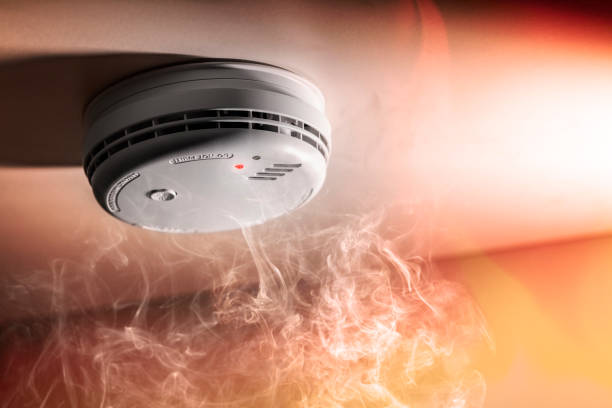
5. Electrical Issues
For hardwired smoke detectors, electrical problems can cause persistent beeping:
- Power surges: These can temporarily disrupt the detector’s functionality
- Loose wiring connections: Poor connections can cause intermittent power issues
- Circuit overloads: If the detector shares a circuit with other devices
- Interconnection problems: In systems where multiple detectors are linked together
If you suspect electrical issues, it may be worth consulting with a licensed electrician, especially if the problem persists after trying other solutions.
6. End of Service Life
All smoke detectors have a limited lifespan, typically between 7-10 years depending on the model and manufacturer. As mentioned earlier, when a detector reaches the end of its service life, it will often begin chirping to indicate replacement is needed.
This end-of-life signal is programmed into the detector and cannot be reset or disabled. The only solution is to replace the entire unit with a new one.
How to Stop Your Smoke Detector from Beeping
Now that we understand the common causes of smoke detector beeping, let’s look at practical solutions to address the problem:
Step 1: Identify the Type of Beep
Before taking action, listen carefully to determine what type of beep you’re hearing:
- Three loud, consecutive beeps: Smoke detection (emergency)
- Single chirp every 30-60 seconds: Likely a low battery
- Multiple chirps with pauses: Possible malfunction or end-of-life signal
Step 2: Replace the Battery
If you’re hearing the low battery chirp:
- Select the appropriate replacement battery (usually 9-volt)
- Remove the detector from its mounting bracket (typically by twisting)
- Open the battery compartment
- Remove the old battery and insert the new one, ensuring proper polarity
- Close the compartment securely
- Remount the detector and test it
According to Wayne Alarm Systems, choosing high-quality batteries for your smoke detectors is worth the investment for reliable protection.
Step 3: Clean the Detector
To address dust and debris issues:
- Turn off power to hardwired detectors (if applicable)
- Remove the detector from its mounting
- Vacuum gently around the sensing chamber openings
- Use compressed air to blow out remaining dust
- Wipe the exterior with a slightly damp cloth
- Allow to fully dry before reinstalling
Step 4: Reset the Detector
Many smoke detectors have a reset button that can help resolve minor glitches:
- Remove the battery (or disconnect power for hardwired models)
- Press and hold the test button for 15-20 seconds
- Reinsert the battery or restore power
- Press the test button briefly to ensure proper function
This process essentially “reboots” your smoke detector and can often resolve intermittent beeping issues.
Step 5: Check for Environmental Factors
If you suspect environmental triggers:
- Consider relocating the detector away from kitchens, bathrooms, and HVAC vents
- Ensure proper ventilation in areas with high humidity
- For temporary cooking smoke, use the detector’s silence or hush button rather than removing the battery
Step 6: Replace the Detector if Necessary
If all else fails and your detector is approaching or past its recommended lifespan:
- Purchase a new detector that meets current safety standards
- Follow manufacturer instructions for installation
- Register the product if applicable
- Note the installation date for future reference
Need help choosing a new smoke detector? View our recommended models for every budget and home type.
Why IS Smoke Detector Beeping at Night (And How to Prevent It)
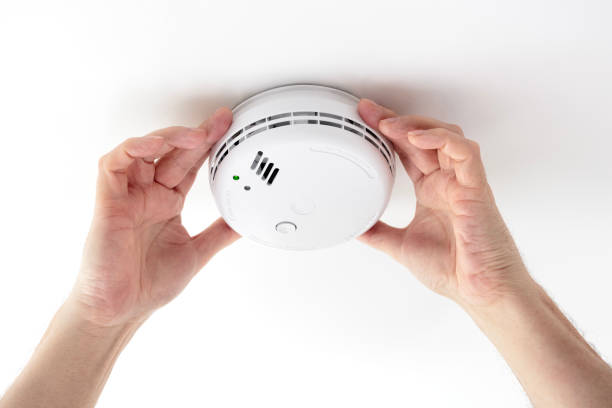
Have you noticed that smoke detectors seem to start chirping more often at night? This isn’t just your imagination. According to Belfor, there are scientific reasons behind this nocturnal nuisance:
- Temperature drops: As homes cool during nighttime hours, battery voltage can slightly decrease, triggering low battery alerts
- Quieter environment: With less background noise, the chirping becomes more noticeable
- Battery depletion timing: Batteries often reach critical levels after being in use throughout the day
To prevent those middle-of-the-night wake-up calls:
- Replace batteries during daytime hours on a regular schedule
- Test detectors monthly during waking hours
- Keep spare batteries on hand for emergency replacements
- Consider upgrading to detectors with sealed 10-year batteries
Different Types of Smoke Detectors and Their Beeping Patterns
Not all smoke detectors are created equal, and different types may have unique beeping patterns:
Ionization Smoke Detectors
These detectors use a small amount of radioactive material to detect smoke particles and are more responsive to flaming fires. Their beeping patterns typically include:
- Three beeps for smoke detection
- Single chirps for low battery
- Rapid beeping for sensor malfunction
Photoelectric Smoke Detectors
Using light sensors to detect smoke particles, these are more sensitive to smoldering fires. Their alert patterns usually include:
- Slower, steady beeps for smoke detection
- Intermittent chirps for low battery
- Series of chirps for sensor issues
Combination Smoke and Carbon Monoxide Detectors
These multi-function devices use distinct patterns to differentiate between threats:
- Three beeps: Smoke detection
- Four beeps: Carbon monoxide detection
- Single chirps: Low battery
- Double chirps: End of life or malfunction
Understanding your specific model’s communication patterns is crucial. Consult your owner’s manual or check the manufacturer’s website for detailed information about what each sound means.
Smart Smoke Detectors: The Future of Home Safety
Technology has revolutionized smoke detectors with smart features that address many common beeping issues:
- Mobile alerts: Receive notifications about low batteries before annoying chirps begin
- Remote testing: Test your detectors from your smartphone
- Voice alerts: Clear spoken messages instead of confusing beeps
- Extended battery life: Many smart models feature batteries lasting up to 10 years
- Interconnectivity: When one detector senses danger, all units alert
These advanced features come at a higher price point, but many homeowners find the convenience and enhanced safety worth the investment. Popular smart smoke detector brands include Nest Protect, First Alert Onelink, and Kidde.
The Importance of Functioning Smoke Detectors
While beeping smoke detectors can be annoying, they play a crucial role in home safety. According to the National Fire Protection Association, the risk of dying in a home fire is cut in half when working smoke alarms are present.
Some sobering statistics to consider:
- Three out of five home fire deaths occur in properties without working smoke alarms
- The death rate is 55% lower in homes with working smoke alarms
- An average of 2,620 people die each year in home fires in the United States
When you’re tempted to remove the battery from a chirping detector “just for tonight,” remember that this simple device could save your life.
Proper Smoke Detector Maintenance Schedule
To avoid unexpected beeping and ensure your smoke detectors function properly when needed, follow this maintenance schedule:
Monthly:
- Test all smoke detectors using the test button
- Listen for clear, loud alarm sounds
- Replace any detectors that don’t respond to testing
Twice Yearly:
- Replace batteries (even if they aren’t chirping yet)
- Clean detectors to remove dust and debris
- Check manufacture dates to plan for replacements
Annually:
- Conduct a smoke test using approved testing products
- Review and practice your family fire escape plan
- Inspect detectors for physical damage or discoloration
Every 10 Years (or as recommended by manufacturer):
- Replace all smoke detectors, regardless of current functioning
- Upgrade to newer technology if available
- Document installation dates for future reference
Following this schedule can significantly reduce unexpected beeping and, more importantly, ensure your home remains protected.
Expert Recommendations for Smoke Detector Placement
To minimize false alarms while maintaining proper protection, follow these expert recommendations for smoke detector placement:
- Install smoke detectors on every level of your home
- Place detectors inside each bedroom and outside sleeping areas
- Mount on ceilings at least 4 inches from walls
- If wall-mounted, position 4-12 inches from the ceiling
- Keep detectors at least 10 feet from cooking appliances
- Avoid placement near windows, doors, or ducts
- For peaked ceilings, install within 3 feet of the peak
For larger homes, interconnected smoke detectors provide the best protection, ensuring that when one detector senses danger, all units sound the alarm.
State-by-State Smoke Detector Requirements
Smoke detector requirements vary by location. Here’s a quick overview of regulations in some states:
| State | Required Locations | Power Source Requirements | Special Requirements |
|---|---|---|---|
| California | All bedrooms, hallways outside sleeping areas, each floor | 10-year sealed battery | Must be interconnected in new construction |
| New York | Each floor, within 10ft of bedrooms | Battery backup for hardwired units | Must be interconnected |
| Texas | Each bedroom and hallways outside sleeping areas | Varies by municipality | Carbon monoxide detection required in some areas |
| Florida | Each bedroom, outside sleeping areas, each floor | Battery backup for hardwired units | Must be interconnected in new construction |
Check with your local fire department for specific requirements in your area, as regulations are frequently updated and may vary at the municipal level.
Understanding the Technology Behind Smoke Detectors
Knowing how smoke detectors work can help you better understand their beeping patterns and maintenance needs:
Ionization Technology
Ionization smoke detectors contain a small amount of radioactive material (usually Americium-241) that ionizes the air in a sensing chamber. When smoke enters this chamber, it disrupts the ionized air, triggering the alarm. These detectors are particularly effective at detecting:
- Fast, flaming fires
- Fires with minimal visible smoke
- Fires involving flammable liquids
Photoelectric Technology
Photoelectric detectors use a light source and a photosensitive sensor positioned at an angle. Under normal conditions, the light doesn’t hit the sensor. When smoke particles enter the chamber, they scatter the light, directing some of it toward the sensor and triggering the alarm. These are better at detecting:
- Smoldering fires
- Fires that generate large smoke particles
- Slow-developing fires
Many fire safety experts recommend having both types in your home for comprehensive protection. Dual-sensor smoke detectors combine both technologies in a single unit.
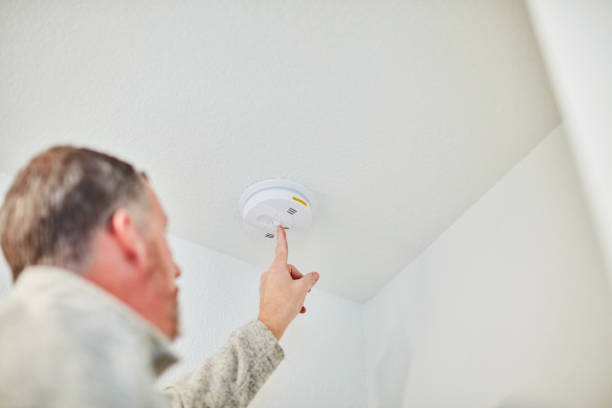
When to Call a Professional
While many smoke detector issues can be resolved with simple DIY solutions, some situations warrant professional assistance:
- Hardwired detectors that continue beeping after battery replacement
- Multiple interconnected detectors all beeping simultaneously
- Detectors that alarm even after cleaning and testing
- Electrical issues affecting detector performance
- Carbon monoxide alarms combined with beeping smoke detectors
For hardwired systems, consulting with a licensed electrician is often the safest approach. They can check for wiring issues, power supply problems, and interconnection failures that might be causing persistent beeping.
Frequently Asked Questions About Beeping Smoke Detectors
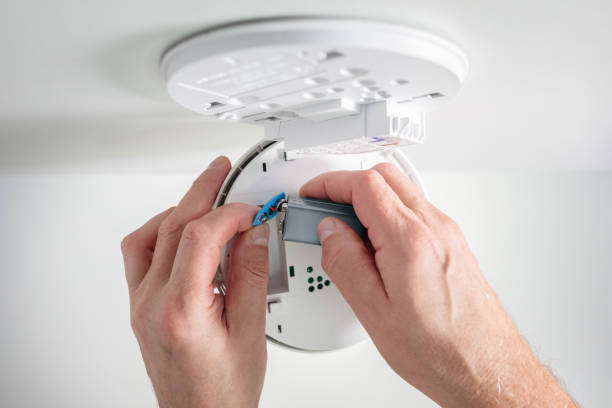
Why is smoke detector beeping even with a new battery?
If your detector continues beeping after battery replacement, potential causes include:
- Dust in the sensing chamber
- Improper battery installation
- Manufacturing defects
- End-of-life condition
- Environmental factors like humidity or insects
Try cleaning the detector and ensuring the battery is correctly installed before considering replacement.
How long will a smoke detector chirp before the battery dies completely?
Most smoke detectors will chirp for days or even weeks before the battery fails entirely. However, the frequency of chirps generally increases as the battery weakens further. It’s best to replace batteries at the first sign of chirping rather than waiting.
Can extreme weather cause my smoke detector to beep?
Yes, both temperature and humidity extremes can affect smoke detector performance. High humidity can cause condensation inside the sensing chamber, while extreme temperatures can affect battery performance and electronic components. During seasonal changes, you might notice increased chirping from your detectors.
Why do all my interconnected smoke detectors beep when only one needs a battery?
In interconnected systems, a low battery in one unit can trigger alerts across the entire network. This is designed as a safety feature, ensuring you’re aware of any potential issues. To resolve this, you’ll need to identify which specific detector has the low battery and replace it.
How do I know if my smoke detector is expired?
Most smoke detectors have a manufacture date printed on the back or inside the battery compartment. Add the recommended lifespan (typically 10 years) to determine the expiration date. Many newer models also have end-of-life beeping patterns that differ from low battery alerts.
Recommended Smoke Detectors for Every Budget
Finding the right smoke detector for your home is crucial for both safety and peace of mind. Here are our top recommendations across different price points:
Budget-Friendly Options ($10-$25)
- First Alert SA320CN: Basic dual-sensor alarm with test button
- Kidde i9050: Simple ionization smoke alarm with hush feature
- BRK 9120B: Hardwired smoke alarm with battery backup
Mid-Range Models ($25-$50)
- First Alert SCO5CN: Combination smoke and carbon monoxide detector
- Kidde P12010: Voice alarm with location announcement
- X-Sense SC01: 10-year sealed battery smoke alarm
Premium Smart Detectors ($100+)
- Google Nest Protect: Voice alerts, mobile notifications, self-testing
- First Alert Onelink: HomeKit compatibility, voice location alerts
- Kidde RF-SM-DC: Wireless interconnection capabilities
All recommended models meet or exceed UL safety standards and offer reliable performance for residential use.
Real-Life Stories: Smoke Detectors That Saved Lives
The Johnson Family – Portland, Oregon
When an electrical fire started in the walls of the Johnson family home at 2 AM, their interconnected smoke detectors alerted them with loud beeps. All five family members were able to evacuate safely before flames engulfed the second floor.
“If our detectors hadn’t been working properly, I don’t think we would have woken up in time,” says Sarah Johnson. “We had just replaced the batteries the month before during our regular maintenance routine.”
The Rivera Apartment – Miami, Florida
Carlos Rivera credits his smart smoke detector with saving not just his apartment but the entire building. While he was at work, his smoke detector detected smoke from a smoldering kitchen fire and sent an alert to his phone. Carlos called emergency services immediately, and firefighters were able to contain the fire before it spread.
“The investment in a smart detector paid for itself a thousand times over,” Carlos explains. “If it had been an old detector with a dead battery, the outcome could have been tragic.”
These stories highlight why proper maintenance and quick response to beeping alarms can make all the difference in emergency situations.
Conclusion: Keeping Your Home Safe and Quiet
Understanding why your smoke detector is beeping is essential for both your peace of mind and your family’s safety. While those persistent chirps can be frustrating, they serve an important purpose: ensuring your home remains protected from fire dangers.
By following the troubleshooting steps outlined in this guide, you can quickly identify and resolve the most common causes of smoke detector beeping. Remember that regular maintenance—including battery replacement, cleaning, and eventual unit replacement—is crucial for keeping your detectors functioning properly.
At SmokeDetectorBeeping.com, we’re committed to helping you understand and maintain these life-saving devices. For more specific information about alarm issues and solutions, visit our dedicated resource page.
Your smoke detector is your first line of defense against devastating house fires. A few minutes of maintenance now could save lives later—even if it means climbing on a stepladder to investigate that annoying chirp.
Contact our experts if you need personalized assistance with persistent smoke detector issues or recommendations for your specific home setup.

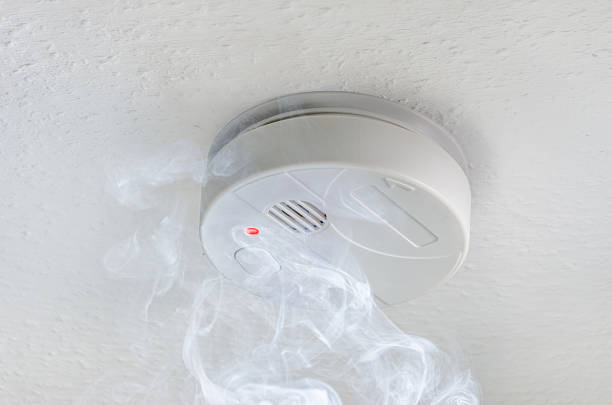
发表回复